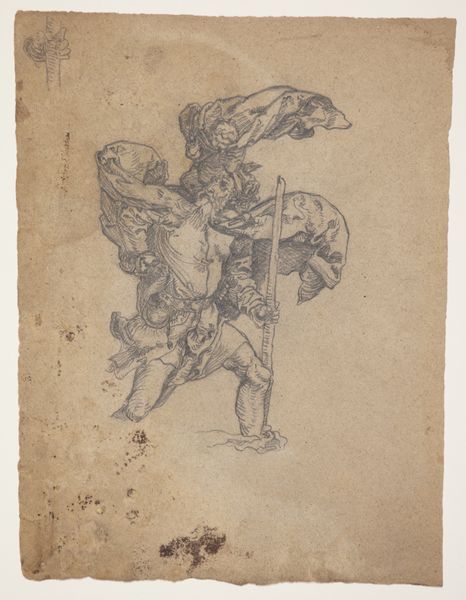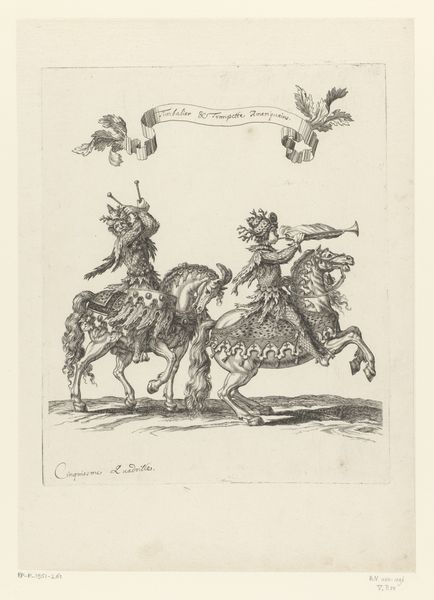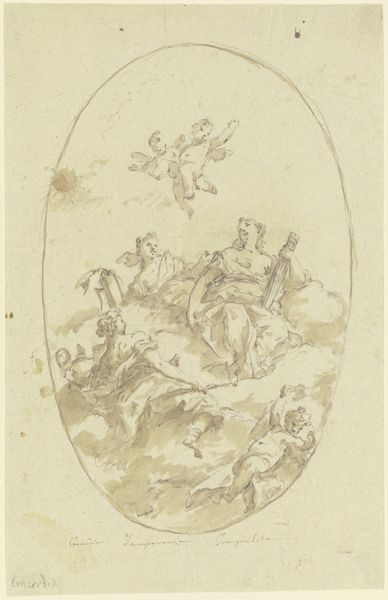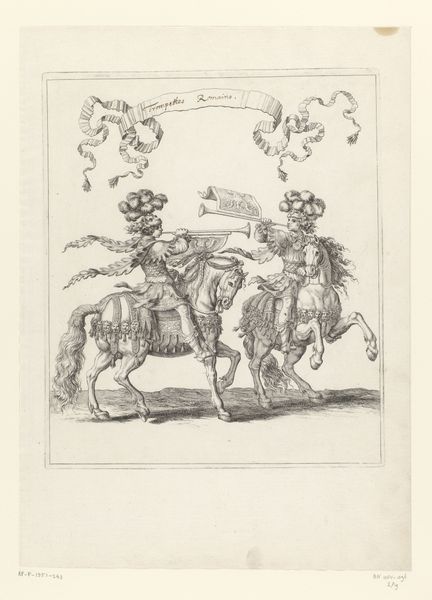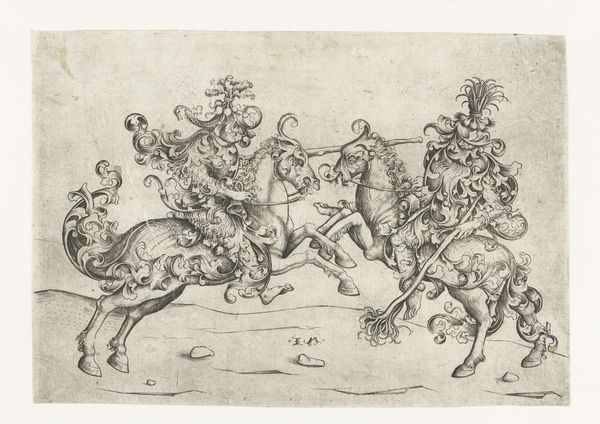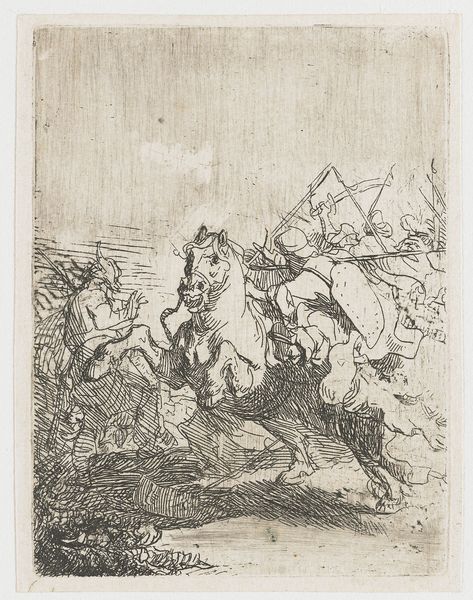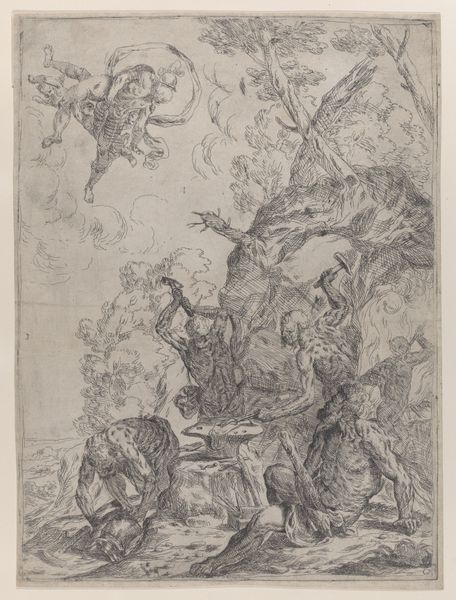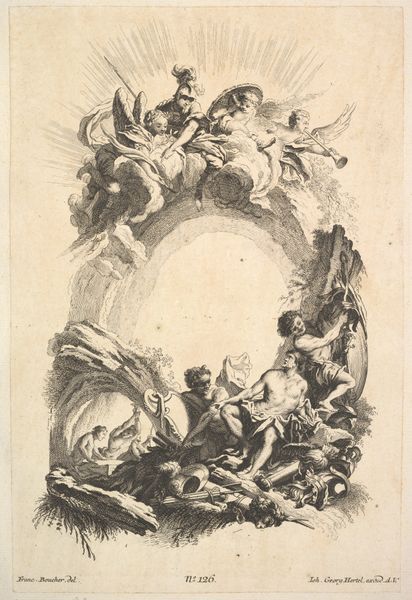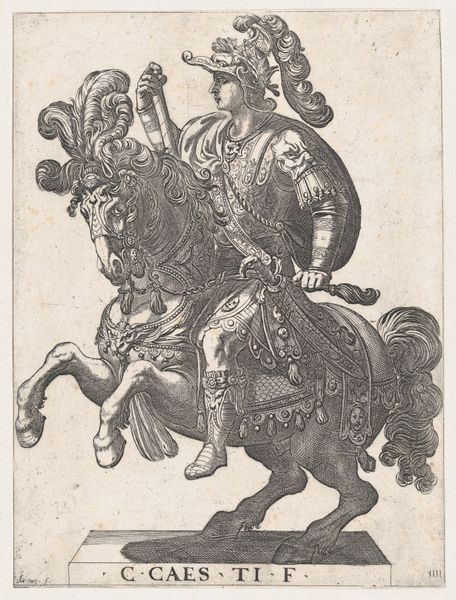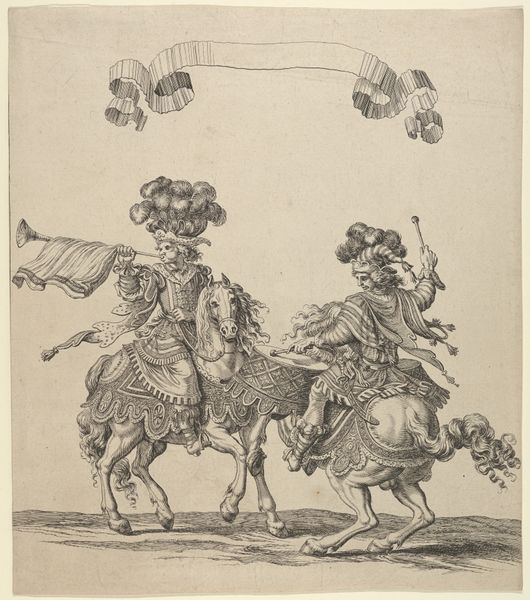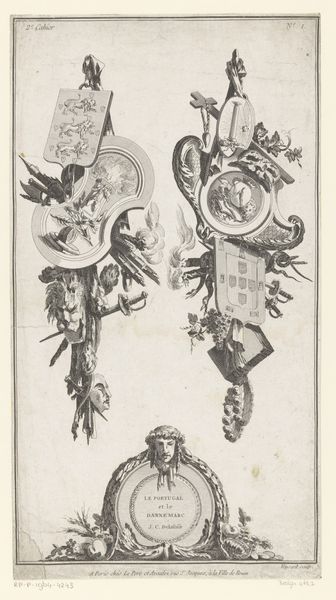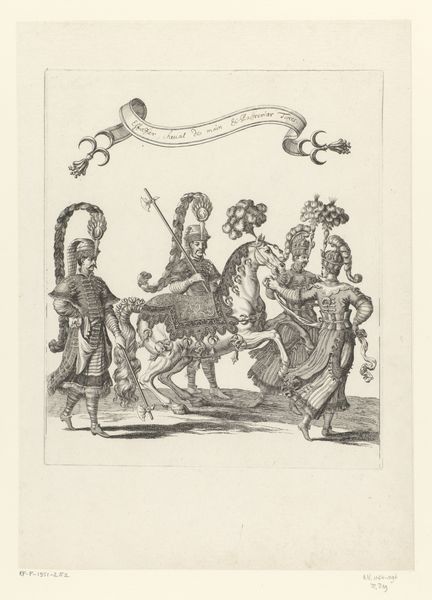
Stipatores, Equus Ductitius, Agasones, Americani, from 'Courses de Testes et de Bagues Faittes par Roy et par les Princes et Signeurs de sa Cour, en l'annee 1662' (Grand Carrousel) 1662 - 1670
0:00
0:00
drawing, print, engraving
#
drawing
#
baroque
#
ink painting
# print
#
figuration
#
coloured pencil
#
men
#
history-painting
#
engraving
Dimensions: Plate: 12 5/16 × 10 7/16 in. (31.3 × 26.5 cm) Sheet: 13 7/16 × 11 9/16 in. (34.2 × 29.4 cm)
Copyright: Public Domain
Curator: Here we have an engraving, dating from 1662 to 1670, by François Chauveau. It’s part of a series called "Courses de Testes et de Bagues Faittes par Roy et par les Princes et Signeurs de sa Cour, en l'annee 1662" otherwise known as "Grand Carrousel". This particular image is titled "Stipatores, Equus Ductitius, Agasones, Americani." Editor: Oh, my. It's…peculiar! Like a fever dream dreamed by someone obsessed with Renaissance fairs and slightly menacing garden gnomes. The lines are so intricate, almost frantically detailed. And is that a unicorn? Curator: Indeed. This print, made with ink, showcases the Baroque style through a combination of etching and engraving. The textures are achieved through varied line weights, reflecting the practices in printmaking and how Chauveau controlled the means to portray the scene's lavishness. It illustrates a carousel, a kind of elaborate equestrian display popular in the French court. Editor: It feels so…staged. All these figures arranged, probably costumed. It makes me wonder, what sort of political messages or societal aspirations were wrapped up in this kind of courtly display? Like everyone involved is sweating under layers of velvet and symbolism. Curator: The materiality gives it all away: The carousels functioned as powerful displays of wealth and political authority, and their production demanded skilled laborers – designers, tailors, equerries. Each component reveals how resources and manpower served absolutist ideals and contributed to the luxury industry in that era. Editor: Luxury as a weapon. Right, so it’s not just about shiny horses and fancy costumes. I see it as an orchestrated moment. Like capturing fleeting beauty—and the inherent fragility of power—with a needle on a copper plate. There’s something haunting about fixing such an ephemeral moment in ink. Curator: I concur. Reflecting on the economic context is also insightful, since we start to see this as a commercial exchange manifested into an event for the king, a physical expression of royal power through careful allocation of human and natural capital. Editor: Thinking about Chauveau meticulously engraving each detail, that careful craftsmanship contrasts vividly with the grandiosity of the subject matter, the spectacle that lasted an afternoon yet required all this long production to remember it in such beautiful lines and shades. Curator: Yes. The artist turns labor into legacy, using prints to propagate and perpetuate power, giving lasting physical form to passing ostentation.
Comments
No comments
Be the first to comment and join the conversation on the ultimate creative platform.

